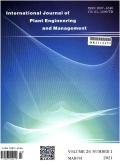Design of Decoupled Mechanical Shim Control System for a Generation III+ Pressurized Water Reactor Based on Feedforward Compensation and Multimodel Approach
International Journal of Plant Engineering and Management
Pub Date : 2018-07-22
DOI:10.1115/ICONE26-81142
引用次数: 0
Abstract
The advanced Mechanical Shim (MSHIM) core control strategy employs two separate and independent control rod banks, namely the MSHIM control banks (M-banks) and axial offset (AO) control bank (AO-bank), for automatic reactivity/temperature and axial power distribution control respectively. The M-banks and AO-bank are independently controlled by two closed-loop controllers called the coolant average temperature (Tavg) controller and AO controller. Since the movement of M-banks and AO-bank can both affect the Tavg and AO, the Tavg controller is coupled with the AO controller. In order to avoid the interference between the two controllers, the MSHIM control system adopts an interlock design between them to avoid the simultaneous movement of the M-banks and AO-bank and make sure the priority of the M-bank movement. This design can enhance the stability of the MSHIM control system. However, the control performance is degraded at the same time. In the present study, the feedforward compensation decoupling method and multimodel approach are used to eliminate the coupling effect between the two controllers in the MSHIM control system during a wide range of power maneuvers. A multiple feedforward compensation system is designed with integration of feedforward compensators for the Tavg and AO controllers at five power levels using the multimodel approach. By implementing it in the MSHIM control system, the interlock between the M-banks and AO-bank can be released to realize the independent and decoupled control between Tavg and AO. The effectiveness of the decoupled MSHIM control system is verified by comparing its control performance with that of the original MSHIM control system during typical load change transients of the AP1000 reactor. The obtained results show that superior and decoupled control of Tavg and AO can be achieved with the proposed decoupled MSHIM control system.基于前馈补偿和多模型方法的第三代压水堆机械垫片解耦控制系统设计
先进的机械垫片(MSHIM)核心控制策略采用两个独立的控制棒组,即MSHIM控制组(m -bank)和轴向偏移(AO)控制组(AO-bank),分别用于自动反应性/温度和轴向功率分配控制。m -bank和AO-bank分别由两个称为冷却剂平均温度(Tavg)控制器和AO控制器的闭环控制器独立控制。由于m -bank和AO-bank的运动都会影响Tavg和AO,因此Tavg控制器与AO控制器耦合。为了避免两个控制器之间的相互干扰,MSHIM控制系统在两者之间采用联锁设计,避免M-bank和AO-bank同时运动,保证M-bank运动的优先级。该设计可以提高MSHIM控制系统的稳定性。但同时也降低了控制性能。在本研究中,采用前馈补偿解耦方法和多模型方法消除了MSHIM控制系统在大范围功率机动过程中两个控制器之间的耦合效应。采用多模型方法,设计了一个多前馈补偿系统,该系统集成了5个功率电平的Tavg和AO控制器的前馈补偿器。通过在MSHIM控制系统中实现该方法,可以解除m -bank与AO-bank之间的联锁,实现Tavg与AO之间的独立解耦控制。通过将解耦MSHIM控制系统与原MSHIM控制系统在AP1000反应堆典型负荷变化过程中的控制性能进行比较,验证了解耦MSHIM控制系统的有效性。结果表明,所提出的解耦MSHIM控制系统可以实现对taavg和AO的良好解耦控制。
本文章由计算机程序翻译,如有差异,请以英文原文为准。
求助全文
约1分钟内获得全文
求助全文

 求助内容:
求助内容: 应助结果提醒方式:
应助结果提醒方式:


